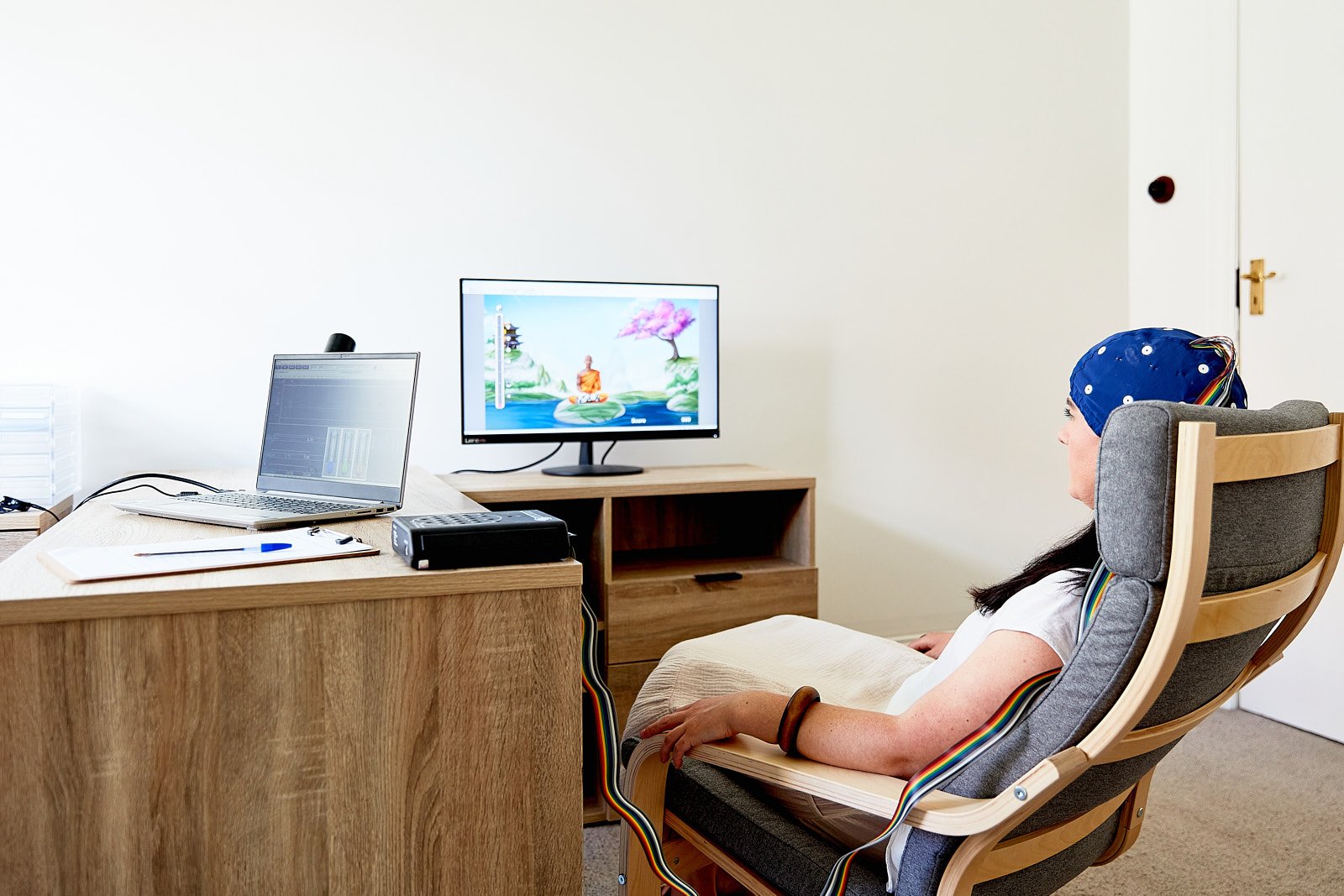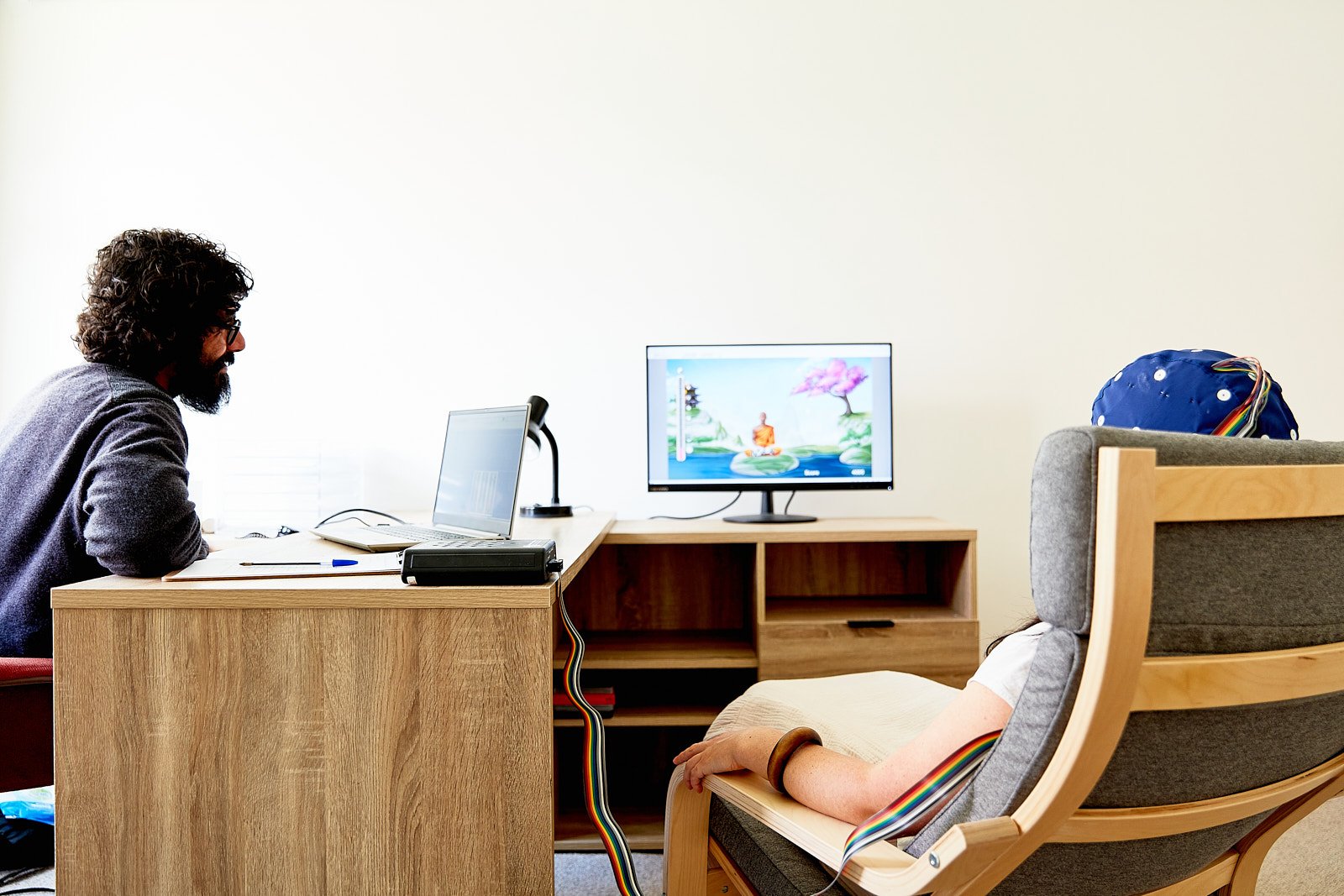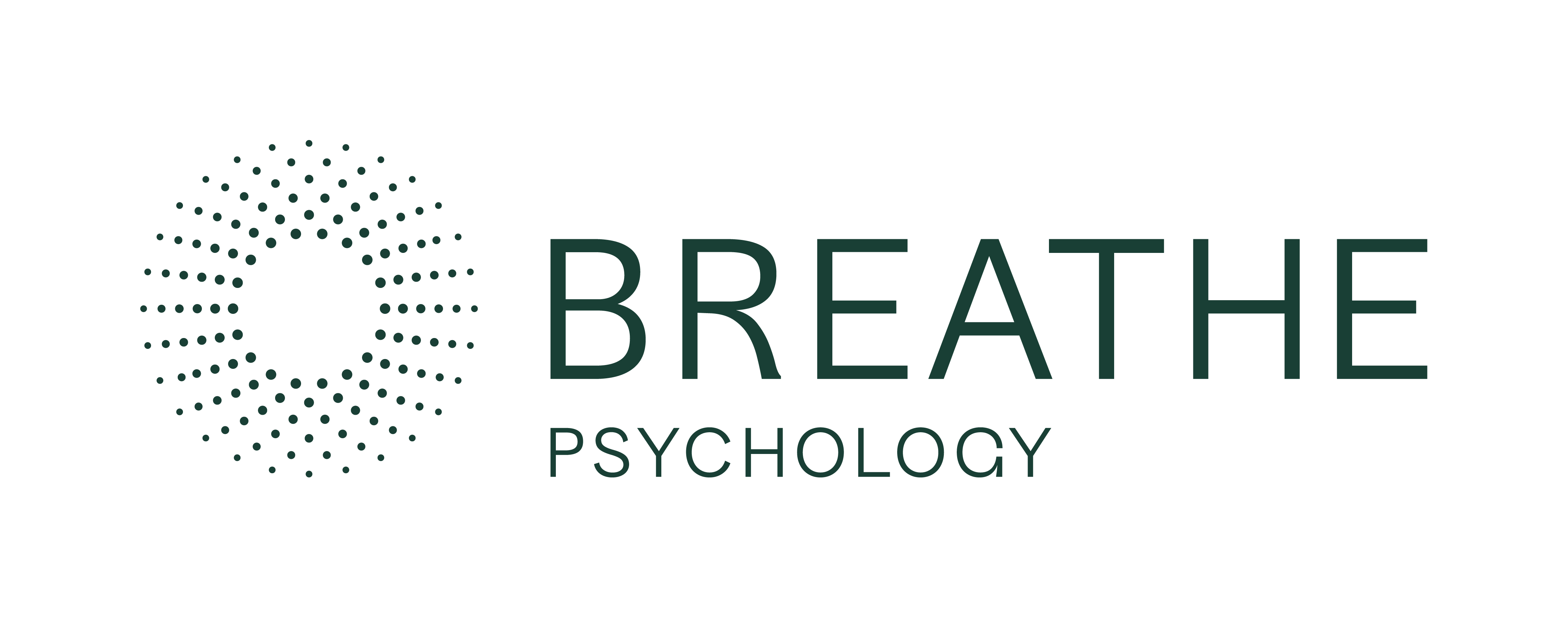Neurofeedback
“A different person rises out of a regulated brain” – Sebern Fisher
Teaching the brain to regulate
What is Neurofeedback?
Neurofeedback is a type of biofeedback that helps the brain function ‘normally’. It is an excellent alternative for individuals who have found no benefit from or would like to avoid more invasive biological treatments such as medication.
It has been found to be beneficial in the treatment of anxiety, depression, PTSD, complex trauma, ADHD, ASD, epileptic seizures. It is also used in high performance training to enhance attention and concentration, better regulate emotions and increase energy levels.
Learn more
Neurofeedback uses EEG equipment to monitor brainwaves, and then rewards the brain when they sit within the desired range. It is important to note that it is your interpretation of the rewards (sometimes in the form of points earned, while playing a game) that gives feedback to the brain and encourages it to change, rather than the equipment itself.
Neurofeedback has a growing evidence base, and despite its relative anonymity in Australia, is widely used in the USA and Europe.
Traditional approaches to the treatment of mental health disorders (e.g. cognitive behavioural therapy) use ‘top-down’ strategies, which principally rely on consciously changing unhelpful patterns of thought and behaviours.
In contrast, neurofeedback uses a ‘bottom-up’ approach, which works directly with the body’s nervous system and encourages it to be less reactive and more responsive to the demands of daily life.
Importantly there are no known long-term side effects from the use of Neurofeedback.

ADHD & Neurofeedback
There is strong evidence for the effectiveness of Neurofeedback in the treatment of ADHD, demonstrating long lasting improvements.
Neurofeedback training has been associated with the following improvements; increased mood stability, decreased hyperactivity, decreased impulsiveness, improved sleep, increased concentration and attention, increased memory and better academic performance (Hammond, 2011).
Learn more
Neurofeedback uses EEG equipment to monitor brainwaves, and then rewards the brain when they sit within the desired range. It is important to note that it is your interpretation of the rewards (sometimes in the form of points earned, while playing a game) that gives feedback to the brain and encourages it to change, rather than the equipment itself.
Neurofeedback has a growing evidence base, and despite its relative anonymity in Australia, is widely used in the USA and Europe.
Traditional approaches to the treatment of mental health disorders (e.g. cognitive behavioural therapy) use ‘top-down’ strategies, which principally rely on consciously changing unhelpful patterns of thought and behaviours.
In contrast, neurofeedback uses a ‘bottom-up’ approach, which works directly with the body’s nervous system and encourages it to be less reactive and more responsive to the demands of daily life.
Importantly there are no known long-term side effects from the use of Neurofeedback.

Neurofeedback may also assist in the treatment of:
Anxiety
Recent research has found that anxiety can inhibit the alpha waves in our brain. So alpha training in Neurofeedback can relieve feelings of anxiety.
Prolonged use of Neurofeedback can train the brain to eventually produce this outcome on its own, reducing overall state and trait anxiety (Marzbani, H., Marateb, H. R., & Mansourian, M., 2016).
Depression
According to a study conducted in 2016, Neurofeedback training can result in significant reductions in symptoms for those experiencing Major Depressive Disorder, as well as anxiety symptoms and clinical illness severity (Cheon, Koo & Choi, 2016).
PTSD
Alpha/Theta training for PTSD has been found to show improvements in low mood and anxiety symptoms, aggressive behaviour, social problems, externalizing or internalizing problems and attentional issues (Hammond, 2011).
An initial step in treating PTSD involves lowering the individual’s arousal levels, as faster alpha and beta waves associated with PTSD are also associated with CNS over-arousal. This is where neurofeedback can be a very effective treatment for those experiencing the debilitating condition of PTSD.
Chronic Pain
Studies suggest that Neurofeedback can teach an individual self-regulation, gradually leading to the client being able to change their perception and reduce or even eliminate the sensation of pain (Ibric & Dragomirescu, 2009).
Epileptic seizures
Studies have shown that Neurofeedback is effective in reducing the rate of seizures in severe and uncontrolled epilepsy. It has also been found to be effective in treating individuals who have seen no improvement from other medical treatments, which is the case for approximately one-third of individuals with epilepsy (Marzbani, H., Marateb, H. R., & Mansourian, M., 2016).
Neurofeedback offers a less invasive treatment for those experiencing uncontrolled epilepsy, without the harmful side-effects and health risks that often come with anti-seizure medication. Neurofeedback may also allow individuals with uncontrolled epilepsy to get their seizures under control, in order to avoid brain surgery.
Migraine headaches
According to Jonathan E. Walker (2001), Neurofeedback has been found to be significantly effective in dramatically reducing or even completely eliminating headaches for those experiencing recurrent migraines. This is achieved by reducing the high frequency of beta waves in the brain.
The study found that one year after the treatment 54% of participants receiving neurofeedback experienced total cessation of migraine headaches, compared to 1% of those using medication as a treatment.
Insomnia
Neurofeedback has been found to be effective in treating insomnia, with as little as 10 sessions resulting in increased sleep spindles, reduced sleep latency and overall improved sleep quality (Hammond, 2011).
Other uses of neurofeedback include:
- Memory improvement
- Improving distraction, confusion and attention problems
- Treating Restless Leg Syndrome, Fibromyalgia and Parkinsons disease
- Treating Obsessive Compulsive Disorder (OCD)
- Treating Autsism Spectrum Disorder (ASD)
- Optimal performance training for musicians, artists, athletes, surgeons and more
What to expect…
Neurofeedback works by placing sensors on specific areas on the scalp, which align with particular areas of the brain. Where the electrode is placed depends on the clients needs and how they would like to train their brain. These electrodes pick up electrical signals from the brain, which is then translated into real time feedback on a computer screen in front of them.
Assessment
Prior to beginning Neurofeedback training, you will attend an assessment with your psychologist.
In this assessment you will be asked to complete a series of questionnaires and undertake a brief assessment (like an interview), to ensure you receive the correct training for your needs. Being as honest as possible at this assessment will increase the likelihood of successful brain training.
Neurofeedback training
Following this assessment you will attend weekly (at minimum) appointments where you will undertake Neurofeedback training with one of our psychologists.
It is important to make sure you provide feedback about anything you notice during and between training sessions to make sure we can make the adjustments needed to get the best outcomes for you.
The number of appointments required to train your brain is normally somewhere between 20 to 40 sessions, but can exceed 100 sessions in some circumstance.
Gains made from brain training are normally permanant, however some individuals require ‘top-up’ sessions from time to time. It should also be clearly stated that – while rare – some people do not respond to Neurofeedback training at all and report no gains.
Sensors measure naturally occurring electrical activity in the brain.
Importantly, individuals who are apprehensive about undertaking Neurofeedback should know that no electrical current goes into your scalp or brain – the sensors are only measuring the electrical activity that is already naturally occurring in a person’s brain.
The trainee is then required to play a game or watch a video on the screen in front of them, while listening for sounds and observing images (which constitute the ‘feedback’), which rewards the brain for producing the desired electrical activity – meaning it is learning.
As such, the only thing going into the individual during Neurofeedback training, are the feedback sounds and images on the screen in front of them, via your eyes and ears.



